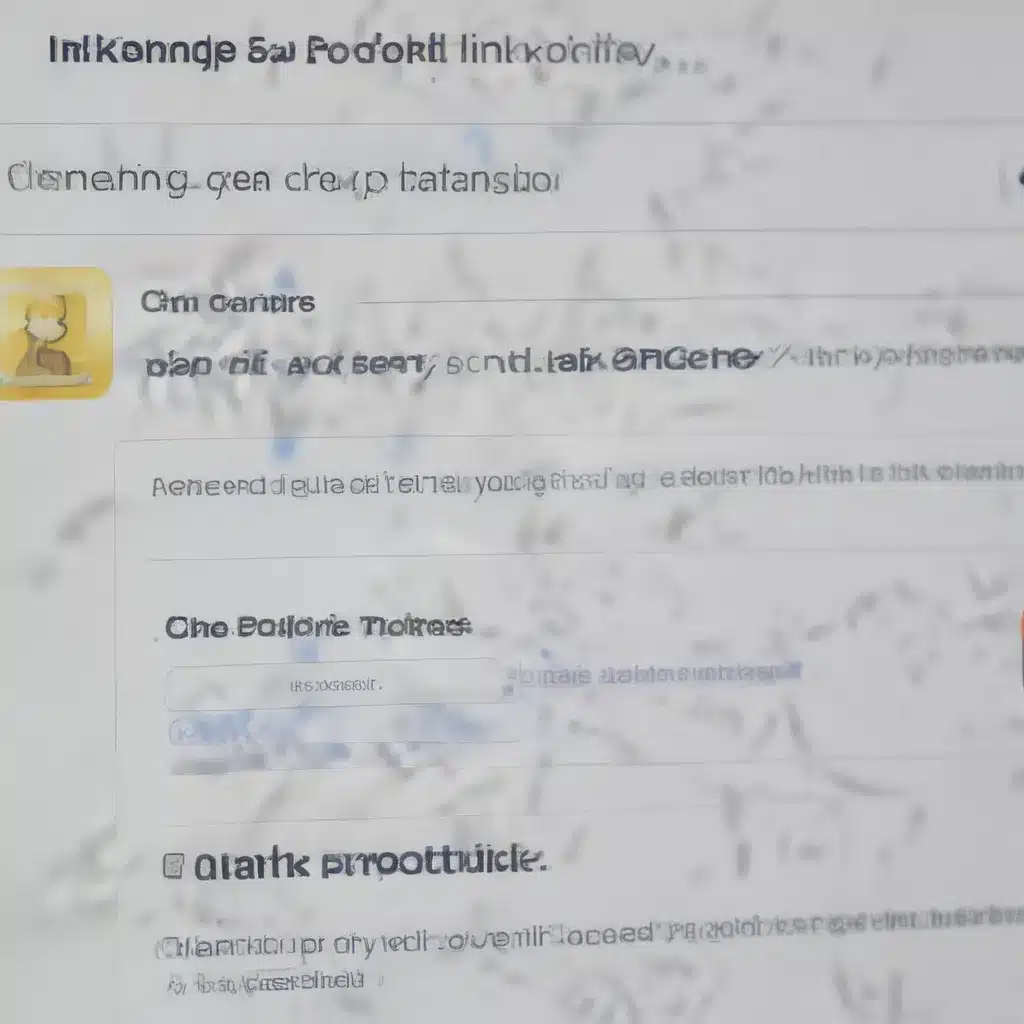
As an SEO enthusiast, I’ve always been fascinated by the intricate world of link building. It’s a delicate dance, where every step can make or break your website’s performance. But when it comes to link profile management, I’ve found that many business owners approach it with a mix of trepidation and confusion.
“How do I know which links to keep, which ones to remove, and how can I do it without risking a penalty from Google?” they ask. Well, my friends, I’m here to share my hard-earned wisdom and guide you through the process of cleaning up your link profile safely.
Understand the Importance of a Healthy Link Profile
Before we dive in, let’s take a moment to appreciate the significance of a well-maintained link profile. Your link profile is like the digital footprint of your website, a reflection of your online authority and credibility. McR SEO, the leading SEO agency in Manchester, UK, has always emphasized the importance of a clean, balanced link profile.
Think of it this way: your link profile is like your personal wardrobe. You wouldn’t want to wear mismatched socks and a tattered shirt to a job interview, would you? The same principle applies to your online presence. A well-curated link profile tells search engines and potential customers that you’re a trustworthy, authoritative resource in your industry.
Identifying Problematic Links
Now, let’s dive into the nitty-gritty of link profile cleanup. The first step is to identify the problematic links that could be dragging down your website’s performance. These could be links from low-quality websites, irrelevant sources, or even spammy link schemes.
As I pored through the search results, I came across some insightful tips from the Nix project on GitHub. They shared that “we read every piece of feedback, and take your input very seriously.” This approach resonates with me, as I believe that actively listening to your audience is key to maintaining a healthy online presence.
Similarly, the Klaviyo community provided valuable insights on list cleaning and segment definition. They emphasized the importance of identifying “non-engaged” subscribers, which is akin to identifying the non-performing links in your profile.
Assessing Your Link Profile
To get started, I recommend using a comprehensive link analysis tool like Ahrefs or Majestic. These platforms will give you a detailed overview of your link profile, including the quality, relevance, and authority of each link.
As you review your link profile, keep an eye out for the following red flags:
- Links from websites with low domain authority or PageRank
- Links from sites with a history of spammy or unethical practices
- Links from irrelevant or off-topic sources
- Links with suspicious anchor text (e.g., “click here,” “buy now”)
- Links that appear to be part of a link scheme or network
Remember, not all low-quality links are necessarily harmful, but it’s essential to have a clear understanding of your link profile to make informed decisions about which ones to keep or remove.
Prioritizing Link Removal
Once you’ve identified the problematic links, it’s time to start the cleanup process. But before you start frantically removing links, it’s crucial to prioritize your efforts. Not all links are created equal, and some may be more detrimental to your website’s performance than others.
As I delved into the Microsoft Answers forum, I came across a helpful discussion on cleaning up the AppData folder. While this may not be directly related to link profile management, the underlying principle of prioritizing your cleanup efforts is highly applicable.
Start by focusing on the links that pose the greatest risk to your website’s health. These may include links from websites with a history of being penalized by search engines, or links that appear to be part of a larger link scheme.
Remember, it’s important to tread carefully during this process. Removing links abruptly or without a well-thought-out strategy can sometimes do more harm than good. Gradual, strategic link removal is the way to go.
Safely Removing Problematic Links
Now that you’ve identified and prioritized the problematic links, it’s time to start the removal process. But before you do, it’s crucial to have a plan in place to ensure that you don’t inadvertently trigger a penalty from Google.
Here are some tips for safely removing problematic links:
-
Contact the Webmasters: Reach out to the webmasters of the sites hosting the problematic links and politely request that they remove the links. Provide them with a clear and concise explanation of why the links need to be removed.
-
Use the Disavow Tool: If the webmasters are unresponsive or unwilling to remove the links, you can use Google’s Disavow tool to inform the search engine that you don’t want those links to be associated with your website.
-
Monitor Your Progress: Keep a close eye on your website’s performance and link profile after the cleanup process. This will help you identify any lingering issues and make adjustments as needed.
Remember, the key to a successful link profile cleanup is patience and a strategic approach. Rushing through the process can often do more harm than good, so take your time and make informed decisions every step of the way.
Embracing a Proactive Approach
As I’ve learned from the TENFORUMS discussion on cleaning up unused user accounts, a proactive approach is crucial when it comes to maintaining a healthy link profile. Don’t wait until your website’s performance starts to suffer before taking action.
Regularly monitor your link profile, identify potential issues, and address them before they become a problem. This will not only keep your website in good standing with search engines but also demonstrate to your customers that you’re committed to maintaining a high-quality online presence.
At the end of the day, cleaning up your link profile is about more than just boosting your SEO rankings. It’s about building trust, credibility, and a strong digital footprint that reflects the true value of your business. So, roll up your sleeves, dive into that link profile, and let’s get cleaning!



























